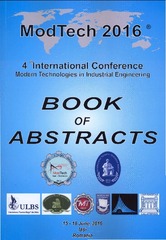Prikaz osnovnih podataka o dokumentu
The Feasibility of Soft Chemical Routes in the Processing of Hierarchically Organized Functional Nanoparticles
| dc.contributor | Carausu, Constantin | |
| dc.creator | Milošević, Olivera | |
| dc.creator | Mančić, Lidija | |
| dc.creator | Rabanal, Maria Eugenia | |
| dc.date.accessioned | 2017-06-10T15:45:07Z | |
| dc.date.issued | 2016 | |
| dc.identifier.uri | https://dais.sanu.ac.rs/123456789/823 | |
| dc.description.abstract | Global warming, climate change and natural resources depletion forces tremendous technological and scientifical research activities for the development of next generation of material able to address both the energy and environmental problems. This implies an exciting progress in the field of nanoscience and nanotechnology, particularly regarding the control synthesis of hierarchically organised nanoscaled particles that might have a great potential for use in solid-state functional materials and devices, like phosphors, sensors, photovoltaics, catalysts, drug delivery carriers, etc. Among the diversity of the soft chemical approaches for nanomaterials processing, synthesis through dispersion phase (aerosol) enables generation of ultrafme, either single or complex powders with controlled stoichiometry, chemical and phase content provided by high heating and cooling rates, short residence time and high surface reaction and is here demonstrated for the synthesis of spherical three-dimensional (3D), hierarchically organized nanostructured particles with uniformly distributed components and phases. The particles composite inner structure, representing an assembly of nanosized primary particles, opens the possibility for particle surface modification and functionalization emphasizing their application in photovoltaics, energy transfer and bioimaging. When one-dimensional (1D) nanomaterials are considered, the hydrothermal method (HT) is shown to be one of the simplest techniques for their obtaining. With the help of various analyzing technique like XRPD, SEMIEDS, FE-SEM, TEM, HR-TEM, STEM, nanotomography, UV-Vis diffusive reflectance (UV-Vis DRS), Fourier transform infrared (FTIR) spectroscopy and luminescence measurements, the opportunities of both methods for the synthesis of novel functional materials based on Gd20 3:Eu, Y203:Eu,Yb,Er,Ho,Tm, (Y1-xGdx)203:Eu, Y3Als012:Ce, NaYF4, Ti02 etc. for solving energy/environmental problems will be reviewed. The obtained results offer a general route for the synthesis of hierarchical nanomaterials with tunable structure, morphology and optical properties. | en |
| dc.format | (2016) 28-28 | |
| dc.format | application/pdf | |
| dc.language | en | |
| dc.publisher | Iasi : ModTech Publishing House | |
| dc.relation | info:eu-repo/grantAgreement/MESTD/Basic Research (BR or ON)/172035/RS// | |
| dc.rights | openAccess | |
| dc.rights.uri | https://creativecommons.org/licenses/by-nc-nd/4.0/ | |
| dc.source | ModTech 2016: 4th International Conference Modern Technologies in Industrial Engineering, 15-18 June 2016, Iasi, Romania: Book of abstract | en |
| dc.subject | aerosol | |
| dc.subject | hydrothermal processing | |
| dc.subject | one-dimensional nanomaterials | |
| dc.subject | nanoparticles | |
| dc.title | The Feasibility of Soft Chemical Routes in the Processing of Hierarchically Organized Functional Nanoparticles | en |
| dc.type | conferenceObject | |
| dc.rights.license | BY-NC-ND | |
| dcterms.abstract | Рабанал, Мариа Еугениа; Манчић, Лидија; Милошевић, Оливера; | |
| dc.citation.spage | 28 | |
| dc.citation.epage | 28 | |
| dc.type.version | publishedVersion | |
| dc.identifier.fulltext | https://dais.sanu.ac.rs/bitstream/id/21780/820.pdf | |
| dc.identifier.rcub | https://hdl.handle.net/21.15107/rcub_dais_823 |

